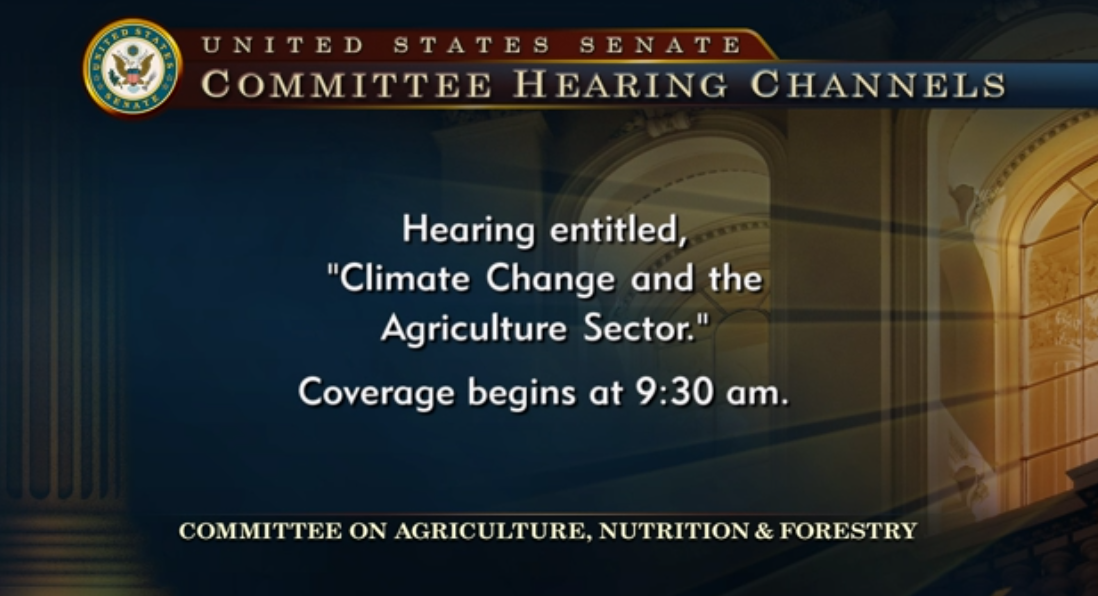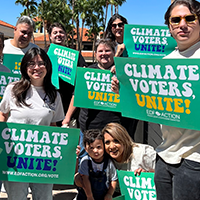3 ways that climate resilience creates opportunity for American farmers
By Callie Eideberg, Senior Policy Manager, Ecosystems Sustainable Agriculture

A recent Senate Agriculture, Nutrition, and Forestry Committee hearing on Climate Change in the Agricultural Sector highlighted the opportunities that climate-smart agriculture creates for farmers and the consumers who depend on them for our food, fuel and fiber.
At the hearing, senators and witnesses explored how the agricultural sector can combat the threat of climate change while increasing revenue and food production. They discussed U.S. agriculture’s achievements to date, and the potential for producers to increase climate resilience with the right resources, market incentives and freedom to innovate.
Here are three ways that climate-smart agriculture benefits farmers.
1. Show that voluntary conservation works
Chairman Pat Roberts (R-KS) and ranking member Debbie Stabenow (D-MI) both highlighted the conservation gains that farmers have made. They also underscored the importance of voluntary conservation.
“America’s farmers and ranchers are continually learning and evolving in order to improve the agricultural production efficiencies and to conserve natural resources, increase resiliency to Mother Nature and to maintain a profitable business.” — Senator Roberts
Voluntary conservation can deliver powerful environmental outcomes while maximizing public dollars and farm profitability. When producers are given the flexibility to find innovative conservation solutions that make economic sense for their operation, they can hit ambitious goals for climate resilience and water quality.
“While our agricultural industry is uniquely affected by climate change, our farmers and food businesses are also uniquely positioned to address the root causes… Agriculture can be leaders in solving this.” — Senator Stabenow
2. Align economic and environmental sustainability
One of the witnesses, Matthew Rezac a fourth-generation farmer from Nebraska, emphasized that climate solutions can, and must, be economically viable for farmers.
He explained that the same on-farm practices that help farmers achieve soil health and water quality goals will also boost climate resilience. Further, precision technology solutions enable producers to find new efficiencies, reduce their environmental impact and increase their profitability.
“It is critical [for] climate solution[s] to make economic sense for farmers.” — Matthew Rezac
3. Tap into new revenue streams
Another witness, Tom Vilsack former secretary of agriculture and current president and CEO of the U.S. Dairy Export Council, highlighted throughout his testimony the untapped revenue potential of ecosystems services marketplaces.
Working lands can store carbon, improve water quality, mitigate downstream flood risk and recharge groundwater supplies. All of these ecosystem services provide public benefit.
Government and private sector partners would ideally compensate farmers for these services, creating new revenue streams for producers. Sonny Perdue, the current secretary of agriculture, has also expressed interested in carbon markets.
“I think we can continue to expand significantly the development of ecosystem markets that will help generate the revenue necessary to adopt [net zero emission] technologies.” — Secretary Vilsack
Partnerships between farmers, businesses and the government can be a powerful force for expanding the opportunities presented by climate-smart agriculture.
This hearing began an important conversation that we hope continues. Agriculture can lead the way toward a climate resilient future that strengthens livelihoods and rural economics, while meeting the needs of a growing population.
Hear from nine commodity crop farmers who say that climate-smart agriculture makes good bipartisan policy.



